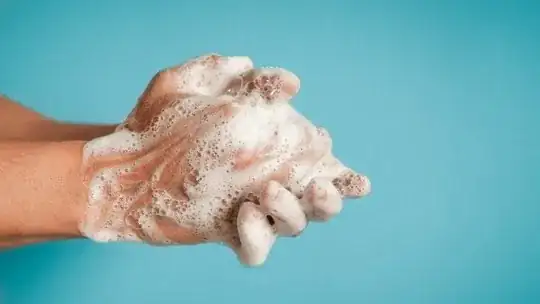We tend to rub soap after applying it to the skin. I found it interesting that the mere act of sliding our hands on the wet skin surface produces millions of air bubbles in the liquid, that later becomes foam. I wonder how exactly we manage to do that?
 [Image source] This is the kind of foam I am talking about (foam/lather/froth... I find these words confusing).
[Image source] This is the kind of foam I am talking about (foam/lather/froth... I find these words confusing).
Talking of foam, I have an unexplainable feeling that the effectiveness of a wash/bath is directly proportional to the amount of foam produced. Coming to think about it, it seems like the opposite should be true.
Soap without foam has a lesser amount of soap solution protruding out as bubbles; most of it is in contact with the skin surface, where actual cleaning takes place. I suspect that this is a misconception that got imprinted to our minds because soap does not clean or foam well in hard water (but that has an entirely different reason).
So to sum up,
- How exactly does rubbing soap on the skin produce foam?
- Is there any plausible reason why a soap with foam can do better cleaning than the same soap without any foam?
Simple and straightforward answers are welcome.